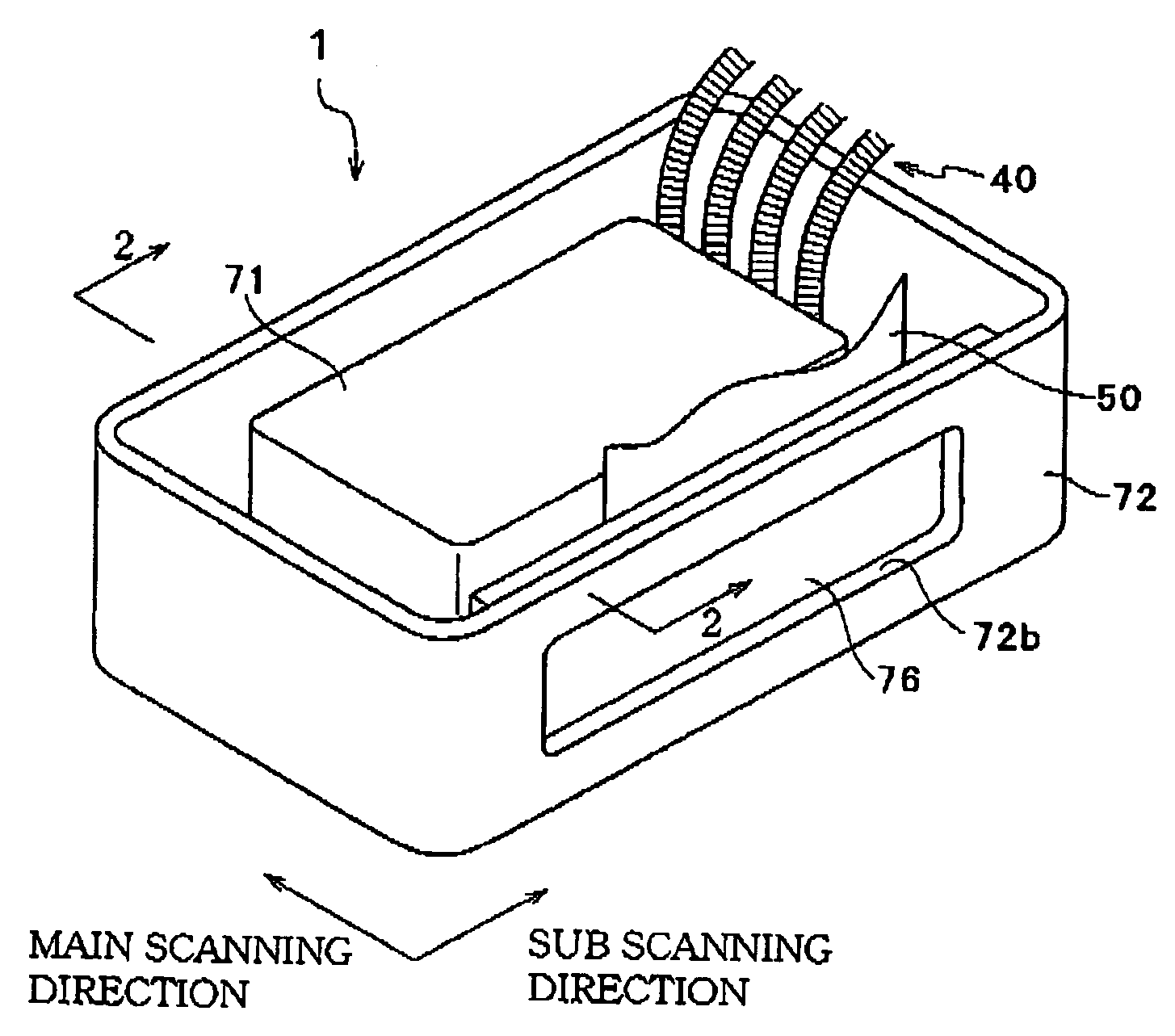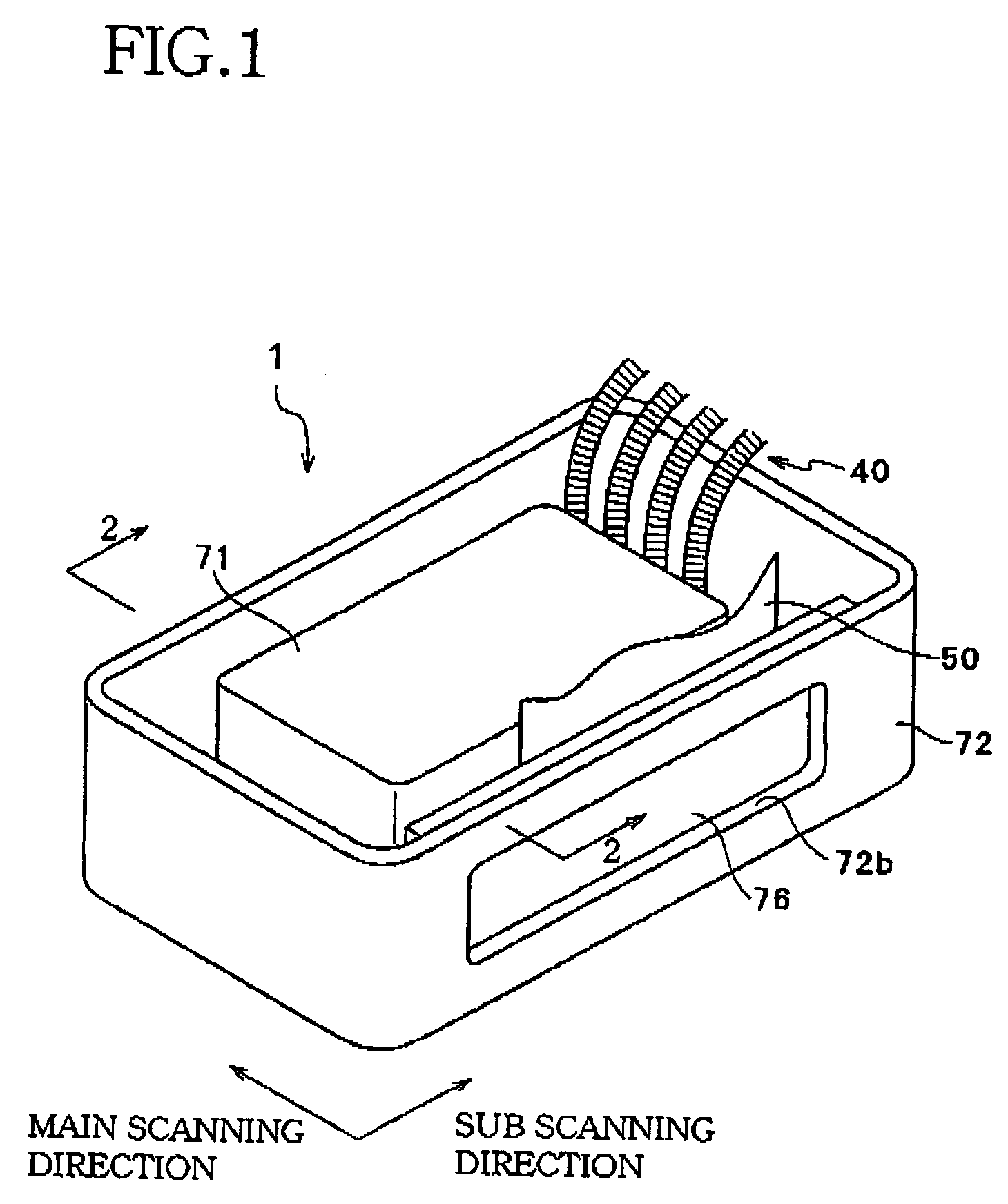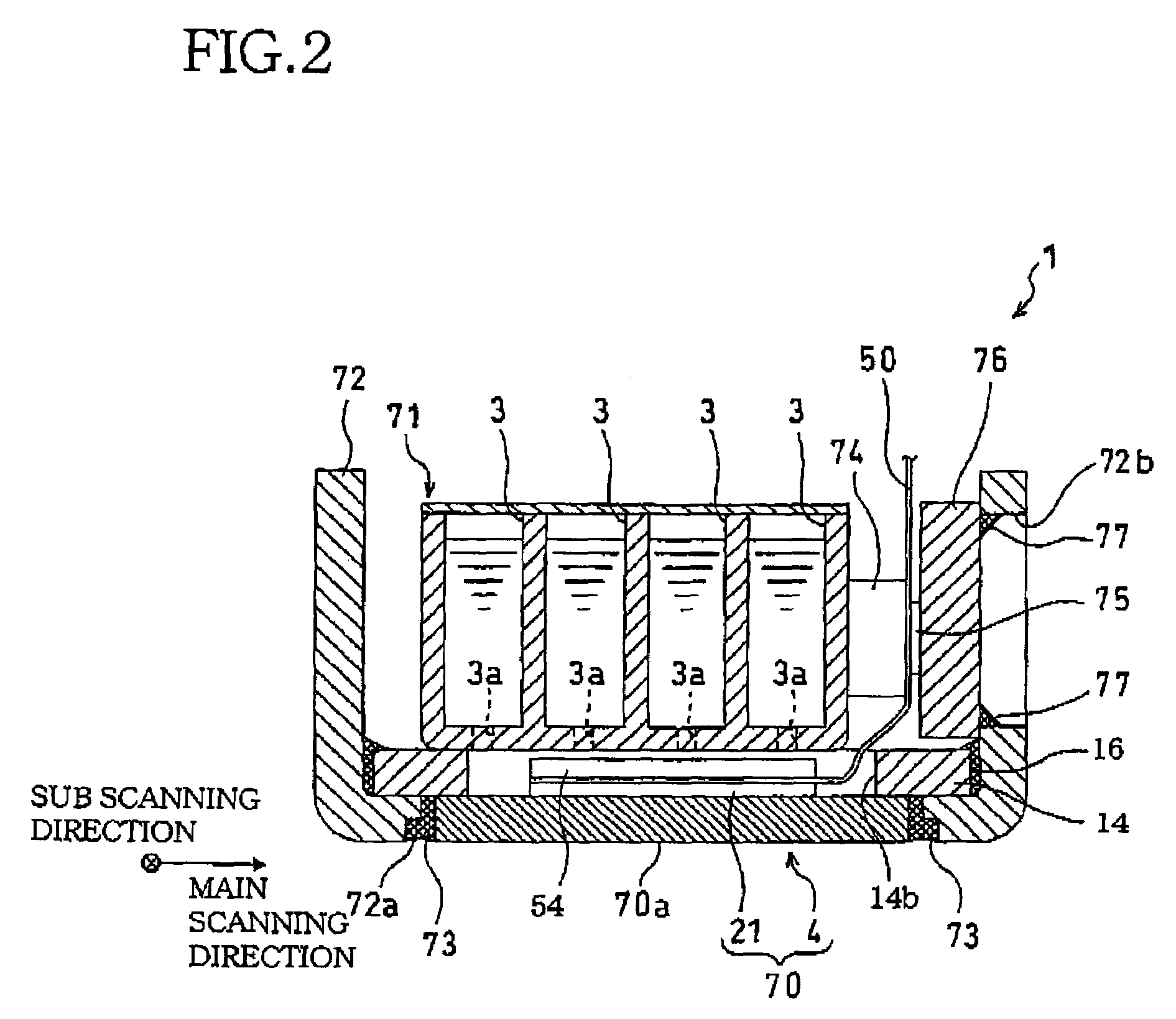Electric device where actuator unit and printed wiring board are connected using bonding parts
a technology of bonding parts and actuators, applied in the direction of printed circuit boards, printed element electric connection formation, dielectric characteristics, etc., can solve the problems of short circuit between individual electrodes, electrical disconnection, and deterioration of the bonding strength between the pad and the auxiliary electrode portion, so as to prevent the occurrence of short circuit, simplify the structure of the electric device, and prevent damage to the actuator unit
- Summary
- Abstract
- Description
- Claims
- Application Information
AI Technical Summary
Benefits of technology
Problems solved by technology
Method used
Image
Examples
first embodiment
[0039]FIG. 1 is an external perspective view of an inkjet head unit according to a first embodiment of the invention. FIG. 2 is a cross-sectional view taken along a line 2-2 in FIG. 1, showing a state where a printhead is mounted on a holder as a component of the inkjet head unit. FIG. 3 is a perspective view showing a state where a reinforcing plate is bonded to the printhead shown in FIG. 2.
[0040]An inkjet head unit 1 is used in a serial inkjet printer (not shown), and constructed to perform recording by ejecting inks of four colors (cyan, magenta, yellow, and black) onto a recording sheet which is fed in along a sub scanning direction. As shown in FIGS. 1 and 2, the head unit 1 comprises an ink tank 71 in which four compartments 3 for separately storing the four color inks are defined, a printhead 70 disposed below the ink tank 71, and a flexible printed wiring board or a flexible printed circuit board (FPC) 50 attached to the printhead 70.
[0041]In the ink tank 71, the four compa...
second embodiment
[0102]Referring now to FIG. 14, there will be described an FPC 100 of an inkjet head unit according to a second embodiment of the invention. FIG. 14 is a cross-sectional view showing the FPC 100 in enlargement. The elements or parts identical with those of the first embodiment will be denoted by the same reference numerals and description thereof is dispensed with.
[0103]The head unit of the second embodiment has substantially the same structure as the head unit 1 of the first embodiment, but the structure of the FPC 100 is slightly different from that of the FPC 50 in the first embodiment. As shown in FIG. 14, the FPC 100 of the second embodiment has a supporting plate (supporting layer) 101 disposed on an upper surface of a base film 46 (i.e., a side of the base film 46 opposite to the side on which terminals 48a and wires 48b are formed). The other part of the FPC 100 is identical with the FPC 50 as described above.
[0104]The supporting plate 101 is a metallic sheet conforming to t...
third embodiment
[0106]As shown in FIG. 15, the FPC 200 of the third embodiment is configured such that each closed space 102 as described with respect to the second embodiment is filled with an elastic material 202. According to this arrangement, terminals 48a on the FPC 200 have an increased elastic restoring force compared to that of the terminals 48a in the FPC 100 of the second embodiment. Thus, the reliability of the electrical connection between the terminals 48a and lands 36 is further enhanced.
PUM
 Login to View More
Login to View More Abstract
Description
Claims
Application Information
 Login to View More
Login to View More - R&D
- Intellectual Property
- Life Sciences
- Materials
- Tech Scout
- Unparalleled Data Quality
- Higher Quality Content
- 60% Fewer Hallucinations
Browse by: Latest US Patents, China's latest patents, Technical Efficacy Thesaurus, Application Domain, Technology Topic, Popular Technical Reports.
© 2025 PatSnap. All rights reserved.Legal|Privacy policy|Modern Slavery Act Transparency Statement|Sitemap|About US| Contact US: help@patsnap.com



